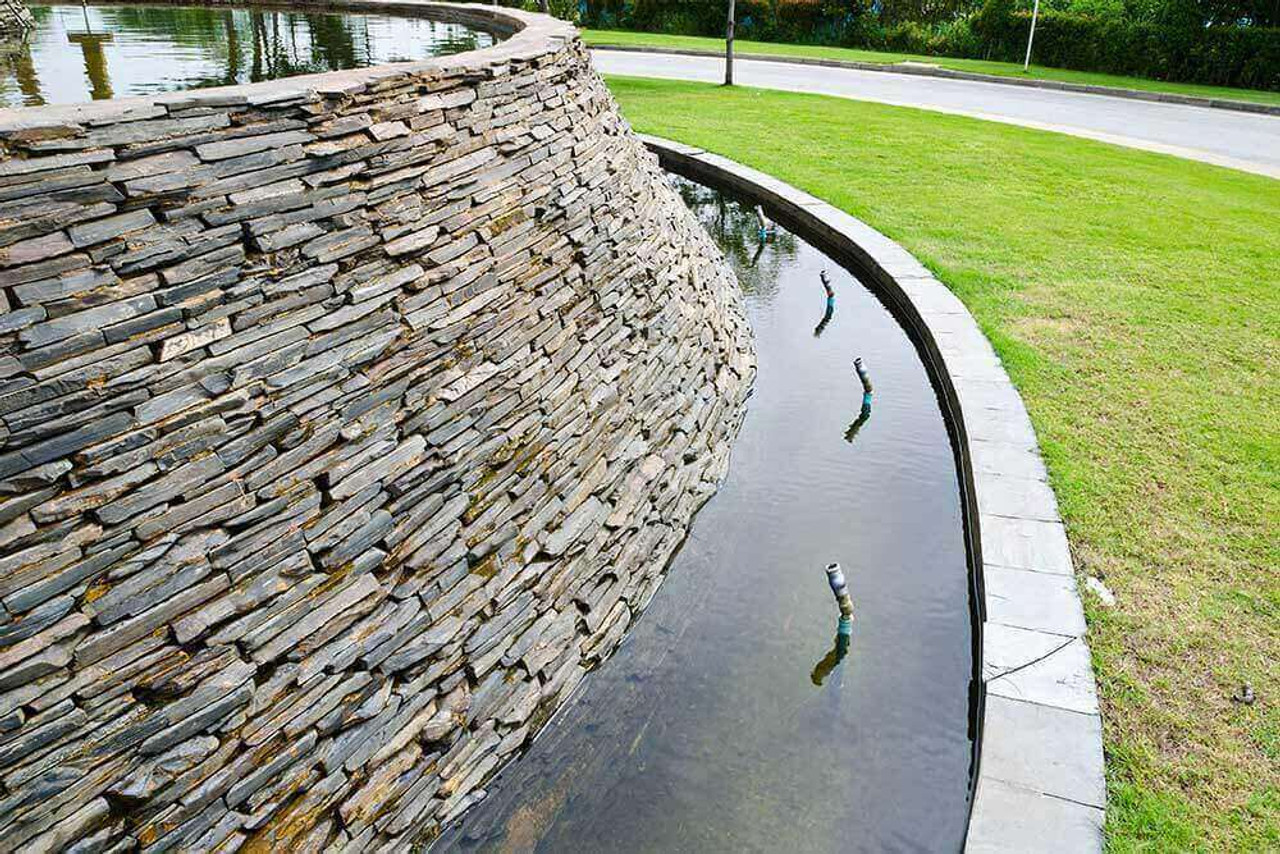Why You Should Waterproof Exterior Walls
Apr 19th 2024

Apr 19th 2024

It is essential for ponds that use exterior or retaining walls to be waterproofed, as these structures will be directly exposed to rain and high humidity. Both the liquid and moisture will move through your masonry, and if it is not properly constructed will adversely affect the internal structure.
Exterior walls which are not adequately waterproofed will remain damp longer than those that are. Aside from the fact that this environment is the perfect breeding ground for mold, the damage may extend further and lead to unwanted water penetration.
Choosing the right waterproofing paint is essential. The best brands are those which are breathable and that allow the exterior walls to “breathe” in a way that prevents and eradicates excessive moisture. You will also need a plaster additive. The right plaster is not only a good way to enhance the aesthetics of the exterior wall, but it can also make them more solid. The best coating is comprised of concrete which is specially designed for masonry as it can be added to virtually any surface.
The highest quality brands are silicate based, since they provide the strongest seals. The material is designed in such a way where it targets the very ingredients that are used in concrete masonry, forming a perfect coating that is versatile and can be used even for walls which are unpainted or unsealed.
While the majority of exterior plasters incorporate waterproofing characteristics, the infiltration of water and the problems that come with it can be avoided through the placement of waterproof additive inside the plaster.
To prep your exterior walls for waterproofing, it is essential to use high quality filler, so that you can fix and patch holes or cracks which are present. The filler must be given enough time to dry out prior to grinding or sanding away any excess material, ensuring that the surface is even and free of dust. Once the walls are dried, you can then apply the waterproofing.
The best tool for applying the waterproofing is a good brush or roller. Sometimes walls will need a secondary coat, and if so you will need to make certain the initial coat is completely dried before applying the second. The barrier you create must be able to resist moisture infiltration. The best way to make sure it works is through testing.
The test for water tightening is the industry standard for determining waterproofing effectiveness. To do it, you will want to spray some water along the surface of the wall for two hours, maintaining the nozzle at an angle of thirty degrees. The wall will only get a passing grade if a moisture meter does not detect any moisture whatsoever. Waterproofing is a complex process that requires skill, experience and attention to detail, so it is best to hire a professional.
| Hours | |
|---|---|
| sunday | 10:00-5:00 |
| monday | 9:00-6:00 |
| tuesday | 9:00-6:00 |
| wednesday | 9:00-6:00 |
| thursday | 9:00-6:00 |
| friday | 9:00-6:00 |
| saturday | 9:00-6:00 |
| Hours | |
|---|---|
| sunday | 10:00-5:00 |
| monday | 9:00-6:00 |
| tuesday | 9:00-6:00 |
| wednesday | 9:00-6:00 |
| thursday | 9:00-6:00 |
| friday | 9:00-6:00 |
| saturday | 9:00-6:00 |
| Hours | |
|---|---|
| sunday | 10:00-5:00 |
| monday | 9:00-6:00 |
| tuesday | 9:00-6:00 |
| wednesday | 9:00-6:00 |
| thursday | 9:00-6:00 |
| friday | 9:00-6:00 |
| saturday | 9:00-6:00 |
| Hours | |
|---|---|
| sunday | 10:00-5:00 |
| monday | 9:00-6:00 |
| tuesday | 9:00-6:00 |
| wednesday | 9:00-6:00 |
| thursday | 9:00-6:00 |
| friday | 9:00-6:00 |
| saturday | 9:00-6:00 |
| Hours | |
|---|---|
| sunday | Closed |
| monday | 9:00-5:00 |
| tuesday | 9:00-5:00 |
| wednesday | 9:00-5:00 |
| thursday | 9:00-5:00 |
| friday | 9:00-5:00 |
| saturday | Closed |





| Hours | |
|---|---|
| sunday | 10:00-5:00 |
| monday | 9:00-6:00 |
| tuesday | 9:00-6:00 |
| wednesday | 9:00-6:00 |
| thursday | 9:00-6:00 |
| friday | 9:00-6:00 |
| saturday | 9:00-6:00 |
| Hours | |
|---|---|
| sunday | 10:00-5:00 |
| monday | 9:00-6:00 |
| tuesday | 9:00-6:00 |
| wednesday | 9:00-6:00 |
| thursday | 9:00-6:00 |
| friday | 9:00-6:00 |
| saturday | 9:00-6:00 |
| Hours | |
|---|---|
| sunday | 10:00-5:00 |
| monday | 9:00-6:00 |
| tuesday | 9:00-6:00 |
| wednesday | 9:00-6:00 |
| thursday | 9:00-6:00 |
| friday | 9:00-6:00 |
| saturday | 9:00-6:00 |
| Hours | |
|---|---|
| sunday | 10:00-5:00 |
| monday | 9:00-6:00 |
| tuesday | 9:00-6:00 |
| wednesday | 9:00-6:00 |
| thursday | 9:00-6:00 |
| friday | 9:00-6:00 |
| saturday | 9:00-6:00 |
| Hours | |
|---|---|
| sunday | Closed |
| monday | 9:00-5:00 |
| tuesday | 9:00-5:00 |
| wednesday | 9:00-5:00 |
| thursday | 9:00-5:00 |
| friday | 9:00-5:00 |
| saturday | Closed |
